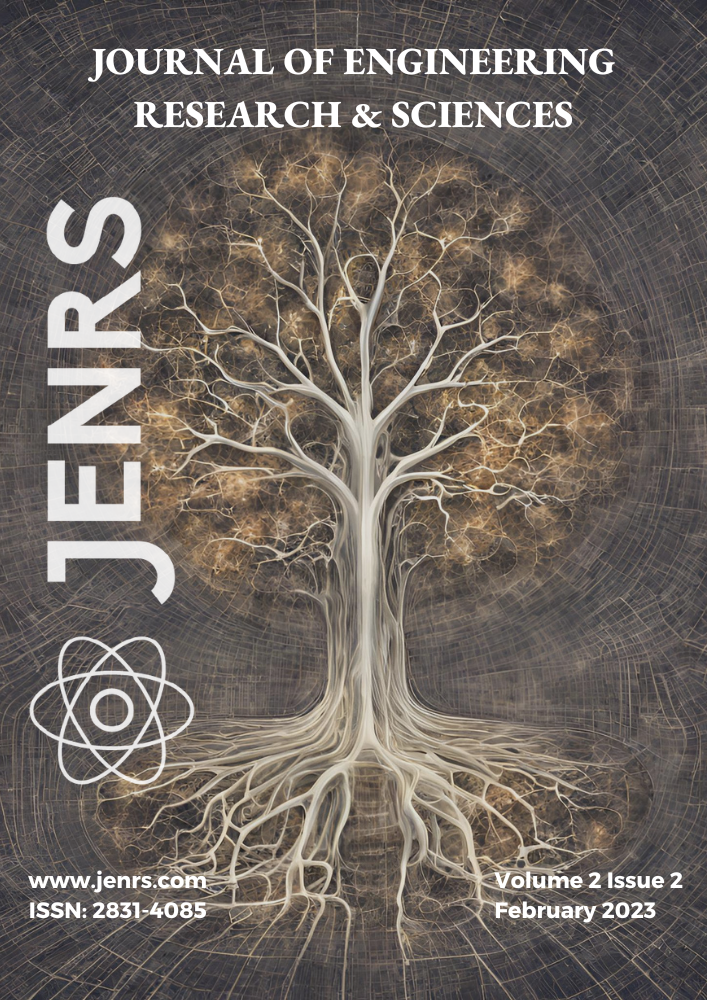
Volume 2, Issue 2
Download Complete Issue
This issue features three important research papers covering mental health in pandemics, digital data security, and food certification transparency. The first study looks at how pandemics affect medical students’ and their parents’ mental health. It found many students showed signs of depression. The second paper explores ways to hide secret information in digital audio files, helping keep data safe. The third study uses blockchain technology to make food certification more trustworthy. It lets people check food certificates using a smartphone app. These papers offer new ideas to solve real-world problems. They could lead to better mental health support, safer digital communication, and more transparent food supply chains.
Front Cover
Publication Month: February 2023, Page(s): i – i
Editorial Board
Publication Month: February 2023, Page(s): ii – ii
Editorial
Publication Month: February 2023, Page(s): iii – iv
Table of Contents
Publication Month: February 2023, Page(s): v – v
COVID-19 Pandemic and Mental Well-Being: A Study Conducted on Medical Students and Their Parents in a Private Medical College in Pakistan
Misha Khan, Mufliha Ibrahim, Muhammad Saad Shabbir , Muhammad Huzaifa Tofique, Muhammad Naheel Khalili, Muhammad Asad, Muhammad Ahmed, Muhammad Haroon, Saima Zainab
J. Engg. Res. & Sci. 2(2), 1-7 (2023);
Pandemics always have a significant effect on the physical, mental, and financial status of people in general. With new variants of coronavirus emerging now and then, it is difficult to process the sudden changes and new healthcare implementations for all individuals. In this situation, our objective was to assess the mental-wellbeing of medical students and their parents and highlight factors that could be associated with their mental-wellbeing deterioration. This is a cross-sectional study in which the non-probability consecutive sampling technique was used. Our sample size was 219 for each population (i.e., parents and medical students). Two questionnaires were designed, one for parents and another for students, each consisting of a personal information section (including personal data and COVID-related questions) and a mental well-being assessing section with the Warwick–Edinburgh Mental Wellbeing Scale (WEMWBS). Descriptive data analysis and all calculations are done using SPSS version 22. A total of 438 responses indicates that 35.2% (n = 154) of respondents have probable depression, 14.6% (n = 64) have possible depression, 43.8% (n = 192) have average mental well-being, and only 6.4% (n = 28) have high mental well-being. A comparison of scores for both groups show that the majority of students (44.7%) have probable depression, while most parents (43.8%) have average mental well-being. High mental well-being was found only in 3.2℅ medical students and 9.2℅ of their parents. Hence, the realization of the effects of different factors, including coronavirus, on both groups is essential.
Applied Salt Technique to Secure Steganographic Algorithm
Bo Bo Oo
J. Engg. Res. & Sci. 2(2), 8-14 (2023);
Digital multimedia assets, including photographs, movies, and audio files, have become a staple of contemporary life. Steganography is a method for undetectable information concealment in these files. One can communicate messages to another by modifying multimedia signals so that a human would be unable to tell the difference between the original signal and the altered one. The widespread use of digital data in practical applications has prompted the development of new and efficient methods for ensuring its security. Steganographic techniques can be used to, at least in part, achieve efficient secrecy. There have been suggested new and adaptable audio steganographic techniques. By using cryptography, readable language is converted to unintelligible data. In order to send and receive text, multimedia, or other important digital files safely, this paper discusses secure communication media. To have secure communication tools, the tools must lessen potential risks and weaknesses. Therefore, the primary factor to take into account for creating a solid communication system is transferred media. The objective of steganographic systems is to find a secure and reliable method to hide a significant amount of secret data. This research focuses on digital image audio steganography, which has become a popular method for data concealment.
Blockchain Tokens for Agri-Food Supply Chain
Ricardo Borges Dos Santos, Rodrigo Palucci Pantoni, Nunzio Marco Torrisi
J. Engg. Res. & Sci. 2(2), 15-23 (2023);
The aim of this research is to suggest and analyze a framework to give universal publicity to food properties certificates from any certification authorities. The focus is the certification of agro product instances, i.e. unique for every single harvest, using smart contracts and blockchain non fungible tokens minted by third-party authorities. The development and testing of a set of smart contracts used the newly established ERC-1155 Ethereum token standard to implement Non-Fungible Tokens (NFT)s. The ERC-1155 tokens allow for representing both the uniqueness, thus non-fungibility, between different harvests as well as the quantitative elements within a specific harvest, e.g. mass fractions of product from the same harvest, which can be interchanged, thus fungible. The framework was developed, deployed, and tested on the Ethereum test net blockchain and submitted to extensive testing. The blockchain data is accessible through general-purpose block scanners and can be read through an Android App used by regular consumers during a supermarket visit. The goal is to give consumers easy access to the Third-party Certificates (TPC) URLs available at the public Ethereum blockchain. The benefit for food safety of widespread TPC visibility through web applications can not be underestimated, since the use of blockchain tokens controlled by smart contracts injects trust in the traceability of the merchandise, reducing counterfeiting and green-washing. The broadcasting of the TPCs with the corresponding discipline of tokens transfer and smart contact restriction to possible abuses increases agro-food supply chain transparency. Trust and transparency foster sustainable buying habits by many consumers and transparency in the complete production and distribution links.

